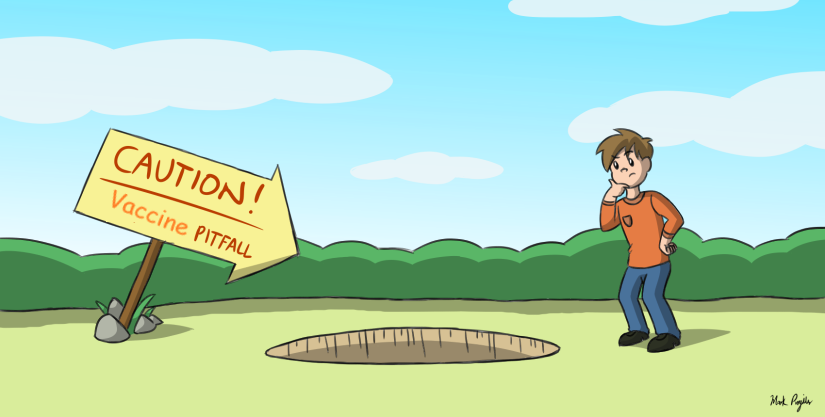Authors: Ger T. Rijkers,1,2,* Nynke Weterings,1 Andres Obregon-Henao,3 Michaëla Lepolder,1 Taru S. Dutt,3 Frans J. van Overveld,1 and Marcela Henao-Tamayo3
Abstract
Infection with Severe Acute Respiratory Syndrome Coronavirus 2 (SARS-CoV-2) causes Coronavirus Disease 2019 (COVID-19), which has reached pandemic proportions. A number of effective vaccines have been produced, including mRNA vaccines and viral vector vaccines, which are now being implemented on a large scale in order to control the pandemic. The mRNA vaccines are composed of viral Spike S1 protein encoding mRNA incorporated in a lipid nanoparticle and stabilized by polyethylene glycol (PEG). The mRNA vaccines are novel in many respects, including cellular uptake and the intracellular routing, processing, and secretion of the viral protein. Viral vector vaccines have incorporated DNA sequences, encoding the SARS-CoV-2 Spike protein into (attenuated) adenoviruses. The antigen presentation routes in MHC class I and class II, in relation to the induction of virus-neutralizing antibodies and cytotoxic T-lymphocytes, will be reviewed. In rare cases, mRNA vaccines induce unwanted immune mediated side effects. The mRNA-based vaccines may lead to an anaphylactic reaction. This reaction may be triggered by PEG. The intracellular routing of PEG and potential presentation in the context of CD1 will be discussed. Adenovirus vector-based vaccines have been associated with thrombocytopenic thrombosis events. The anti-platelet factor 4 antibodies found in these patients could be generated due to conformational changes of relevant epitopes presented to the immune system.
1. Introduction
The high morbidity and mortality rate of coronavirus disease of 2019 (COVID-19) has triggered the rapid development of vaccines against its causative agent, Severe Acute Respiratory Syndrome Coronavirus 2 (SARS-CoV-2). Vaccines are the most effective way to eliminate and control the virus [1,2]. Most of the vaccines developed for COVID-19 have shown very high levels of protection. Within one year after the outbreak of the pandemic and identification of the genomic structure of SARS-CoV-2, a number of highly effective vaccines were approved and used globally, as over 2.5 billion vaccine doses have been administered [3] (dated 25 June 2021; World Health Organization). The two major categories of SARS-CoV-2 vaccines are mRNA-based vaccines and viral vector vaccines, both targeting the Spike protein of the virus [4]. Worldwide, the most used mRNA vaccines are those of Pfizer/BioNTech (BNT162b2, brand name Comirnaty) and of Moderna (mRNA-1273, brand name COVID-19 Vaccine Moderna). The most-used adenovirus vector vaccines are the ones of Oxford/AstraZeneca (ChAdOx1 nCoV-19, brand names Vaxzevria and Covishield) and Jansen/Johnson and Johnson (Ad26.COV2.S, brand name Janssen COVID-19 Vaccine), as well as the Sputnik-V and CanSino vaccines.
Both mRNA vaccines for SARS-CoV-2 as well as viral vector based vaccines have turned out to be highly effective for protection against mild and severe COVID-19 cases. After vaccination, high titers of IgG and IgA antibodies against the Spike protein are generated which, in vitro, show a virus neutralizing capacity, and cytotoxic T cells are activated [5,6,7].
The aim of this review is to delineate the molecular pathways, outside and inside of the cell, which ultimately lead to the presentation of Spike peptides to the immune system. Both the classical antigen presentation routes via MHC class I to CD8+ T cells and via MHC class II to CD4+ T cells, as well as the antigen-presenting routes for presentation to non-conventional T cells, will be reviewed and discussed.
While SARS-CoV-2 vaccines are protecting from the severe illness and deaths due to COVID-19, after large-scale implementation, rare immune-mediated side effects became apparent. In particular, anaphylactic reactions and various thrombotic or abnormal bleeding have raised concern [8,9]. These side effects may be due to abnormal handling or presentation of the vaccine or vaccine additives to the immune system, of which the potential scenarios will be discussed.
For A Detailed Explanation: https://www.ncbi.nlm.nih.gov/pmc/articles/PMC8402319/
